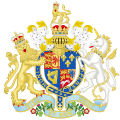| Portrait | Name
(Birth–Death) | Term of office | Monarch
(Reign) | Ref. |
|---|
 | Sir Edward Nicholas
(1593–1669) | 1 June
1660 | 20 October
1662 | Charles II

(1660–1685) | [10] |
 | Henry Bennet
1st Earl of Arlington
(1618–1685) [a] | 20 October
1662 | 11 September
1674 | [11] |
 | Henry Coventry
MP for Droitwich
(c. 1618–1686) | 11 September
1674 | 26 April
1680 | [12] |
 | Robert Spencer
2nd Earl of Sunderland
(1641–1702) | 26 April
1680 | 2 February
1681 | |
 | Sir Leoline Jenkins
MP for Oxford University
(c. 1625–1685) | 2 February
1681 | 14 April
1684 | [13] |
 | Robert Spencer
2nd Earl of Sunderland
(1641–1702) | 14 April
1684 | 28 October
1688 | |
James II

(1685–1688) |
 | Charles Middleton
2nd Earl of Middleton
(c. 1650–1719) | 28 October
1688 | 2 December
1688 | [14] |
 | Charles Talbot
12th Earl of Shrewsbury
(1660–1718) | 14 February
1689 | 2 June
1690 | Mary II

(1689–1694)
&
William III

(1689–1702) | |
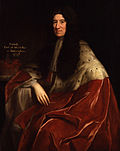 | Daniel Finch
2nd Earl of Nottingham
(1647–1730) [b] | 2 June
1690 | November
1693 | [15] |
 | Sir John Trenchard
MP for Poole
(1649–1695) [c] | November
1693 | 27 April
1695 | [16] |
 | Charles Talbot
1st Duke of Shrewsbury
(1660–1718) | 27 April
1695 | 12 December
1698 | |
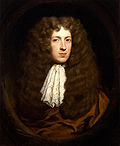 | James Vernon
MP for Westminster
(1646–1727) [d] | 12 December
1698 | 14 May
1699 | [17] |
 | Edward Villiers
1st Earl of Jersey
(c. 1656–1711) | 14 May
1699 | 27 June
1700 | |
 | James Vernon
MP for Westminster
(1646–1727) [e] | 27 June
1700 | 4 January
1702 | [17] |
 | Charles Montagu
4th Earl of Manchester
(c. 1662–1722) | 4 January
1702 | 1 May
1702 | |
Anne

(1702–1714) |
 | Daniel Finch
2nd Earl of Nottingham
(1647–1730) | 2 May
1702 | 22 April
1704 | [15] |
 | Sir Charles Hedges
MP for West Looe
(1650–1714) [f] | 18 May
1704 | 3 December
1706 | [18] |
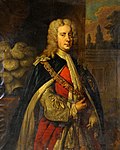 | Charles Spencer
3rd Earl of Sunderland
(1675–1722) | 3 December
1706 | 13 June
1710 | [19] |
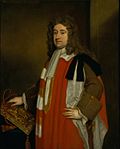 | William Legge
1st Earl of Dartmouth
(1672–1750) | 15 June
1710 | 6 August
1713 | |
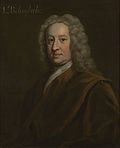 | Henry St John
1st Viscount Bolingbroke
(1678–1751) | 17 August
1713 | 31 August
1714 | [20] |
George I

(1714–1727) |
 | James Stanhope
MP for Cockermouth
(1673–1721) [g] | 27 September
1714 | 22 June
1716 | [21] |
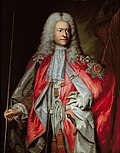 | Sir Paul Methuen
MP for Brackley
(c. 1672–1757) [h] | 22 June
1716 | 10 April
1717 | [22] |
 | Joseph Addison
MP for Malmesbury
(1672–1719) | 12 April
1717 | 14 March
1718 | [23] |
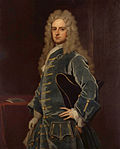 | James Craggs 'the Younger'
MP for Tregony
(1686–1721) | 16 March
1718 | 16 February
1721 | [24] |
 | John Carteret
2nd Baron Carteret
(1690–1763) | 4 March
1721 | 31 March
1724 | |
 | Thomas Pelham-Holles
1st Duke of Newcastle
(1693–1768) [i] | 6 April
1724 | 12 February
1748 | |
George II

(1727–1760) |
 | John Russell
4th Duke of Bedford
(1710–1771) | 12 February
1748 | 13 June
1751 | |
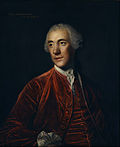 | Robert Darcy
4th Earl of Holderness
(1718–1778) | 18 June
1751 | 23 March
1754 | |
 | Sir Thomas Robinson
MP for Christchurch
(1695–1770) | 24 March
1754 | October
1755 | [25] |
 | Henry Fox
MP for Windsor
(1705–1774) | 14 November
1755 | 13 November
1756 | [26] |
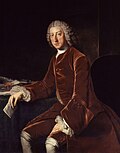 | William Pitt 'the Elder'
MP for Okehampton
(1708–1778) | 4 December
1756 | 6 April
1757 | [27] |
 | Robert Darcy
4th Earl of Holderness
(1718–1778) [j] | 6 April
1757 | 27 June
1757 | |
 | William Pitt 'the Elder'
MP for Bath
(1708–1778) | 27 June
1757 | 5 October
1761 | [27] |
George III

(1760–1820) |
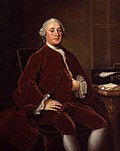 | Charles Wyndham
2nd Earl of Egremont
(1710–1763) | 9 October
1761 | 21 August
1763 | [28] |
 | George Montagu-Dunk
2nd Earl of Halifax
(1716–1771) | 9 September
1763 | 10 July
1765 | |
 | Henry Seymour Conway
MP for Thetford
(1719–1795) | 12 July
1765 | 23 May
1766 | [29] |
 | Charles Lennox
3rd Duke of Richmond
(1735–1806) | 23 May
1766 | 29 July
1766 | |
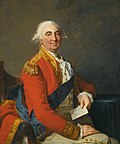 | William Petty
2nd Earl of Shelburne
(1737–1805) | 30 July
1766 | 20 October
1768 | [30] |
 | Thomas Thynne
3rd Viscount Weymouth
(1734–1796) | 21 October
1768 | 12 December
1770 | |
 | William de Zuylestein
4th Earl of Rochford
(1717–1781) | 19 December
1770 | 9 November
1775 | |
 | Thomas Thynne
3rd Viscount Weymouth
(1734–1796) [k] | 9 November
1775 | November
1779 | |
 | Wills Hill
1st Earl of Hillsborough
(1718–1793) | 25 November
1779 | 27 March
1782 | [31] |
|
